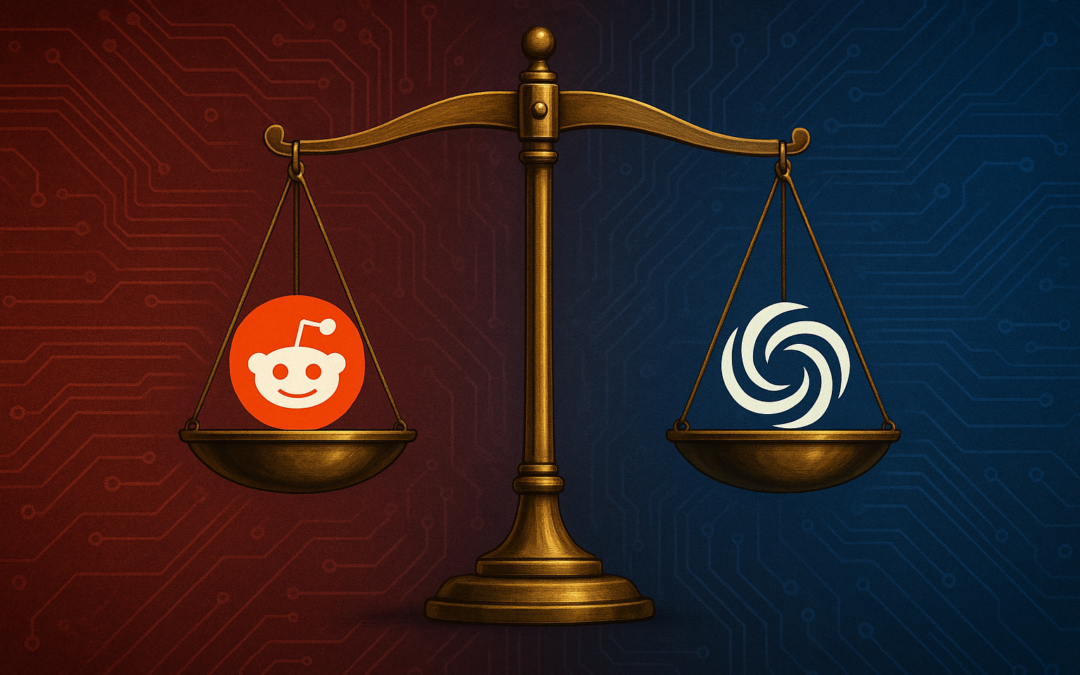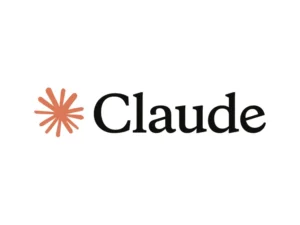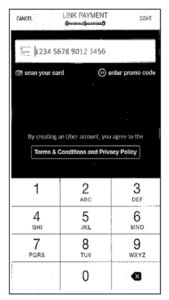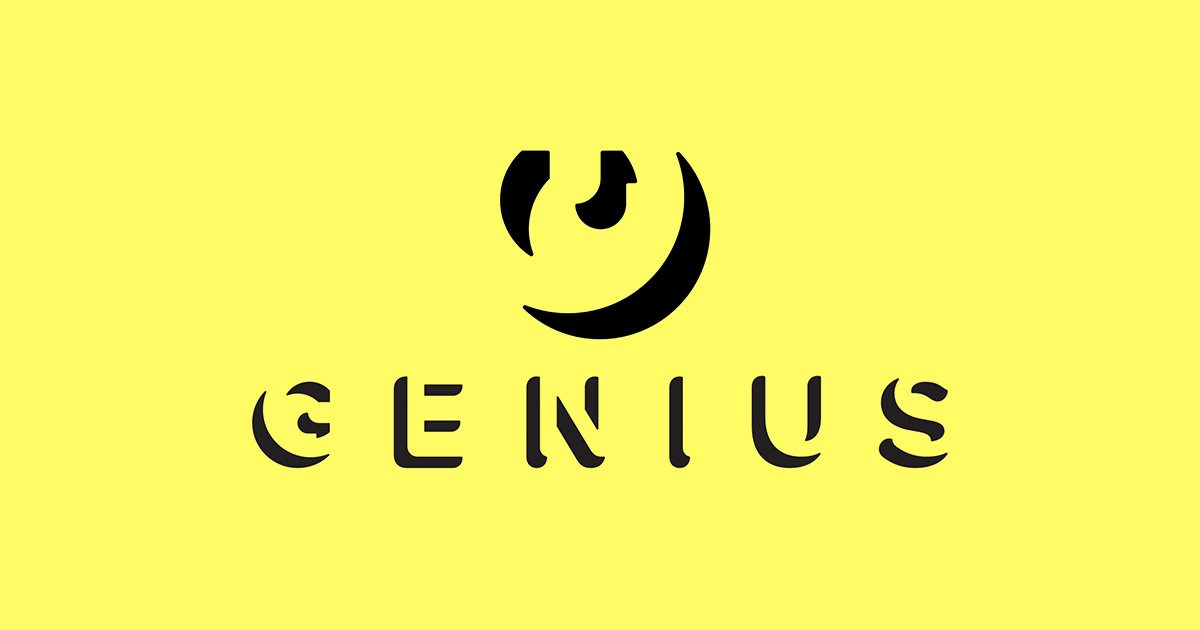
by Lee Gesmer | Jun 23, 2025 | Contracts, Copyright, DMCA/CDA
At the heart of large language model (LLM) technology lies a deceptively simple triad: compute, algorithms, and data.
Compute powers training – vast arrays of graphics processing units crunching numbers at a scale measured in billions of parameters and trillions of tokens. Algorithms shape the intelligence – breakthroughs like the Transformer architecture enable models to understand, predict, and generate human-like text. Data is the raw material, the fuel that teaches the models everything they know about the world.
While compute and algorithms continue to advance at breakneck speed, data has emerged as a critical bottleneck. Training a powerful LLM requires unimaginably large volumes of text, and the web’s low-hanging fruit – books, Wikipedia, forums, blogs – has largely been harvested.
The large AI companies have gone to extraordinary lengths to collect new data. For example, Meta allegedly used bittorrent to download massive amounts of copyrighted content. OpenAI reportedly transcribed over a million hours of Youtube videos to train its models. Despite this, the industry may be approaching a data ceiling.
In this context, Reddit represents an unharvested goldmine – a sprawling archive containing terabytes of linguistically rich user-generated content.
And, according to Reddit, Anthropic, desperate for training data, couldn’t resist the temptation: it illegally scraped Reddit without a license and trained Claude on Reddit data.
The Strategic Calculus: Why Contract, Not Copyright
Reddit filed suit against Anthropic in San Francisco Superior Court on June 4, 2025. However, it chose not to follow the well-trodden path of federal copyright litigation in favor of a novel contract-centric strategy. This tactical pivot from The New York Times Co. v. OpenAI and similar copyright-based challenges signals a fundamental shift in how platforms may assert control over their data assets.
Reddit’s decision to anchor its complaint in state contract law reflects the limitations of copyright doctrine and the structural realities of user-generated content platforms. Unlike traditional media companies that own their content outright, Reddit operates under a licensing model where individual users retain copyright ownership while granting the platform non-exclusive rights under Section 5 of its User Agreement.
This ownership structure creates obstacles for copyright enforcement at scale. Reddit would face complex Article III standing challenges, since it lacks the requisite ownership interest to sue for direct infringement. Moreover, the copyright registration requirements (a precondition to filing suit) would prove prohibitively expensive and logistically impossible for millions of user posts. And, even if Reddit could establish standing, it would face the copyright fair use defenses that have been raised in the more than 40 pending AI copyright cases.
requisite ownership interest to sue for direct infringement. Moreover, the copyright registration requirements (a precondition to filing suit) would prove prohibitively expensive and logistically impossible for millions of user posts. And, even if Reddit could establish standing, it would face the copyright fair use defenses that have been raised in the more than 40 pending AI copyright cases.
By pivoting to contract law, Reddit sidesteps these constraints. Contract claims require neither content ownership nor copyright registration – only proof of agreement formation and breach.
The Technical Architecture of Alleged Infringement
Reddit’s complaint alleges that Anthropic’s bot made over 100,000 automated requests after July 2024, when Anthropic publicly announced it had ceased crawling Reddit. This timeline is significant because it suggests deliberate circumvention of robots.txt exclusion protocols and platform-specific blocking mechanisms.
According to Reddit, the technical details reveal sophisticated evasion tactics. Unlike legitimate web crawlers that respect robots.txt directives, the alleged “ClaudeBot” activity employed distributed request patterns designed to avoid detection. Reddit’s complaint specifically references CDN bandwidth costs and engineering resources consumed by this traffic – technical details that will be crucial for establishing the “impairment” element required under California’s trespass to chattels doctrine.
The complaint’s emphasis on Anthropic’s “whitelist” of high-quality subreddits demonstrates technical sophistication in data curation. This selective approach undermines any defense that the scraping was merely incidental web browsing, instead revealing a targeted data extraction operation designed to maximize training value while minimizing detection risk.
Here’s a quick look at the three strongest counts in Reddit’s complaint: breach of contract, trespass to chattels and unjust enrichment.
Browse-Wrap Formation: The Achilles’ Heel
The most vulnerable aspect of Reddit’s contract theory lies in contract formation under browse-wrap principles. Reddit argues that each automated request constitutes acceptance of its User Agreement terms, which prohibit commercial exploitation under Section 3 and automated data collection under Section 7.
However, under Ninth Circuit precedent applying California law, browse-wrap contracts require reasonably conspicuous notice, and Reddit’s User Agreement link appears in small text at the page footer without prominent placement or mandatory acknowledgment – what some courts have termed “inquiry notice” rather than “actual notice.”
And, unlike human users who might scroll past terms of service, automated bots often access content endpoints directly, without rendering full page layouts. This raises fundamental questions about whether algorithmic agents can form contractual intent under traditional offer-and-acceptance doctrine.
This raises fundamental questions about whether algorithmic agents can form contractual intent under traditional offer-and-acceptance doctrine.
California courts have been increasingly skeptical of browse-wrap enforcement, and have required more than mere website access to establish assent. Reddit’s theory will need to survive a motion to dismiss where Anthropic will likely argue that no reasonable bot operator would have constructive notice of buried terms.
The Trespass to Chattels Gambit
“Trespass to chattels” is the intentional, unauthorized interference with another’s tangible personal property (contrasted with real property) that impairs its condition, value, or use. Reddit asserts that Anthropic “trespassed” by scraping data from Reddit’s servers without permission.
Reddit’s trespass claim faces a high bar. California courts require proof of actual system impairment rather than mere unauthorized access. Reddit tries to meet this standard by citing CDN overage charges, server strain, and engineering time spent mitigating bot traffic. These bandwidth costs and engineering expenses, while real, may not rise to the level of system impairment that the courts demand.
The technical evidence will be crucial here. Reddit must demonstrate quantifiable performance degradation – slower response times, server crashes, or capacity limitations – rather than merely increased operational costs. This evidentiary burden may prove difficult given modern cloud infrastructure’s elastic scaling capabilities.
Unjust Enrichment and the Licensing Market
Reddit’s unjust enrichment claim rests on its data’s demonstrable market value, evidenced by licensing agreements with OpenAI, Google, and other AI companies. These deals, reportedly worth tens of millions annually, establish a market price for Reddit’s content.
The legal theory here is straightforward: Anthropic received the same valuable data as paying licensees but avoided the associated costs, creating an unfair competitive advantage. Under California law unjust enrichment requires showing that the defendant received a benefit that would be unjust to retain without compensation.
Reddit’s technically sophisticated Compliance API bolsters this claim. Licensed partners receive real-time deletion signals, content moderation flags, and structured data feeds that ensure training datasets remain current and compliant with user privacy preferences. Anthropic’s alleged automated data extraction bypassed these technical safeguards, potentially training on content that users had subsequently deleted or restricted.
Broader Implications for AI Governance
If Reddit’s contract theory succeeds, it would establish a powerful precedent allowing platforms to impose licensing requirements through terms of service. Every website with clear usage restrictions could potentially demand compensation from AI companies, fundamentally altering the economics of model training.
Conversely, if browse-wrap formation fails or federal preemption invalidates state law claims, AI developers would gain confidence that user generated web content remains accessible, subject to copyright limitations.
The Constitutional AI Paradox
Most damaging to Anthropic may be the reputational challenge to its “Constitutional AI” branding. The company has positioned itself as the ethical alternative in AI development, emphasizing safety and responsible practices. Reddit’s allegations create a narrative tension that extends beyond legal liability to market positioning.
This reputational dimension may drive settlement negotiations regardless of the legal merits, as Anthropic seeks to preserve its differentiated market position among enterprise customers increasingly focused on AI governance and compliance.
Conclusion
While Reddit’s legal claims face significant doctrinal challenges, the case underscores the importance of understanding both the technical architecture of web scraping and the evolving legal frameworks governing AI development. The outcome may determine whether platforms can use contractual mechanisms to assert control over their data assets, or whether AI companies can continue treating public web content as freely available training material subject only to copyright challenge.

by Lee Gesmer | Jun 6, 2023 | Contracts, General
Any sufficiently advanced technology is indistinguishable from magic. Arthur C. Clarke
Do you recall when Netscape Navigator was released in December 1994? I suspect not. You may not have been born or you might have been too young to take notice. This software marked the public’s first widespread introduction to a user-friendly web browser, and it was a big deal at the time. I remember buying a copy on disk from Egghead Software in Boston and trying (with limited success) to access the World Wide Web using a dialup modem.
Of course, few people foresaw that Navigator would set off the “dotcom boom,” which ended with the “dotcom crash” in 2000, only to be followed by the ubiquitous internet technologies we live with today
Will OpenAI’s release of ChatGPT in November 2022 be remembered as a similar event for artificial intelligence? It may prove to be as significant as the invention of the printing press, as Henry Kissinger and his co-authors suggest. (link, WSJ paywall). Or, it may signal the demise of the human race, as Stephen Hawking warned. Or, once the novelty wears off it may simply become another forgotten episode in the decades-long AI over-hype cycle
However, for now one thing is clear: there will be a lot of lawyering to be done.
When the internet took off in the late ‘90s a vast number of legal issues emerged, keeping lawyers busy for years afterwards. However, it wasn’t immediately obvious that this would occur, and issues emerged slowly over time. By comparison, in 2023 generative AI – as represented by ChatGPT and other “large language models” (LLMs) – has landed like a bomb. Seemingly hundreds of new products are being released daily. Countless new companies are being formed to join the “AI gold rush” of 2023.
So, what are the legal issues (so far)? Warning, this topic is already vast, so what follows is a selective summary. I hope to write about these issues in more detail in the future.
AI and Copyright Law
At least for the moment, when it comes to generative AI, copyright law is the primary battlefield. The copyright issues can be divided into legal questions that deal with the “output” side versus the “input” or “training” side.
The Output Issue – Who Owns An AI Model’s Output? Who owns the copyright in works created by AI image generators, whether autonomously created or a human-AI blend?
I covered this topic from the perspective of the Copyright Office in a recent post. Generative AI Images Struggle for Copyright Protection. Shortly after I published that post the Copyright Office issued a policy statement, Copyright Registration Guidance: Works Containing Material Generated by Artificial Intelligence, reaffirming its policy that works be the product of human authorship, but noting that there is a substantial grey area that will need to be decided on a case-by-case basis:
[works] containing AI-generated material [may] also contain sufficient human authorship to support a copyright claim. For example, a human may select or arrange AI-generated material in a sufficiently creative way that “the resulting work as a whole constitutes an original work of authorship.” Or an artist may modify material originally generated by AI technology to such a degree that the modifications meet the standard for copyright protection. In these cases, copyright will only protect the human-authored aspects of the work, which are “independent of ” and do “not affect” the copyright status of the AI-generated material itself.
The Copyright Office has also created a web page tracking its activities in copyright AI, including an initiative to examine the copyright law and policy issues raised by AI technology. (link)

9th Cir.: Monkey selfie not copyright-protected
However, the Copyright Office is not the last word when it comes to AI and copyrightability – the federal courts are, and the issue is pending in a lawsuit before the Federal District Court for the District of Columbia (Thaler v. Perlmutter). Suffice it to say that there are no court decisions as yet, and all monkey-business aside who (if anyone) owns AI outputs scraped from the internet is an open (and rapidly evolving) question.
The Input Issue – Can You Use Copyrighted Content To Train An AI LLM? The training stage of AI tools requires the scraping and extraction of relevant information from underlying datasets (typically the internet), which contain copyright protected works. Can AI companies simply hoover up copyright-protected works without the consent of their owners and use that material to “train” LLMs?
AI companies think so, but content creators think otherwise. Getty has filed suit against Stability AI in the U.S. (link) and in a parallel case in London, claiming that this company illegally copied over 12 million photographs from Getty’s website to train Stable Diffusion. Other cases have been filed on the same issue (Andersen v. Stability AI, pending N.D. Cal.). The central legal issue in these cases is whether unauthorized use of copyrighted materials for training purposes is illegal or (as the AI companies are certain to assert) “transformative” and therefore protected under the fair use doctrine? The Supreme Court’s recent decision in Warhol v. Goldsmith is likely to have some bearing on this issue. (sarcasm ….)
While the legal question under U.S. law may be whether these activities qualify as fair use, in the EU the copyright aspects of training are likely to fall under the text and data mining (TDM) exceptions in the Copyright in Digital Single Market (CDSM) Directive. (To go in depth on the TDM exceptions see Quintais, Generative AI, Copyright and the AI Act).
However, the issues surrounding output ownership and the utilization of copyrighted materials to train LLMs are merely scratching the surface. It’s easy to foresee that copyright law and AI are going to intersect in other ways. An example of this is cases involving music that copies an artist’s “artistic style” or “voice”. At present copyright law does not protect artistic style. But for the first time, music AI systems make it easy to copy a style or an artist’s voice, so there will be pressure on the law to address this form of copying. It remains to be seen whether copyright law will expand to encompass artistic style, or whether artists will have to rely on doctrines such as the right of publicity or “passing off.”
Liability Shield Under CDA/Section 230
While the copyright issues in AI are complex, the legal issues around AI are not limited to copyright. An AI could generate defamatory content.
Even worse, it could be used to create harmful or dangerously wrong information. If a user prompts an AI for cocktail instructions and it offers a poisonous concoction, is the AI operator liable? What if the AI instructs someone on how to build a dangerous weapon, or to commit suicide? What if an AI “hallucination” (aka false information generated by an AI) causes harm or injuries?
Controversy over online companies’ liability for harmful content has led to countless litigations, and generative artificial intelligence tools are likely to be pulled into the fray. If ChatGPT and other LLMs are deemed to be “information content providers” they will not be immunized by Section 230, as it exists today.
Supreme Court Justice Neil Gorsuch alluded to this during oral argument in Gonzalez v. Google, where he suggested that generative AI would not be covered by Section 230’s liability shield. (link, p. 49) Two of Section 230’s 1996 congressional co-authors have publicly stated that it does not – “If you are partly complicit in content creation, you don’t get the shield.” (link)
Section 230 was enacted to protect websites from liability based on user inputs. However, given the unpopularity of Section 230 on both sides of the isle it seems unlikely that Congress will amend Section 230, or pass new laws, to limit the liability of AI companies whose products generate illegal content based on user inputs. The opposing view, as observed by internet law scholar Prof. Eric Goldman, is that “we need some kind of immunity for people who make [AI] tools . . . without it, we’re never going to see the full potential of A.I.” (link, behind NYT paywall).
Contracts and Open Source
Because copyright-protected works can also be the subject of contracts, there will be issues of contract law that intersect with copyright. We can already see examples of this. For example, In the Getty/Stability AI case mentioned above, Getty’s website terms prohibit the very use Stability AI made of Getty photos. A class action suit has been filed over AI scraping of code on Github without providing attribution required by the applicable OSS license agreements, raising questions about the risks of using AI in software development. That suit also relies on DMCA Section 1202 for removing copyright management information (CMI).
These cases point to the fact that companies need to monitor and regulate their use of AI code generators to avoid tainting their code bases. Transactional lawyers (licensing, M&A) will have to be alert to these issues. Suffice it to say that there are significant questions over whether using open source code requires compliance with restrictions of the open source licenses.
Patent Law
What if an AI creates a patentable invention? Similar to copyright, the USPTO will only consider inventions from “natural persons” and not machines. This has already been the subject of litigation (Thaler v. Vidal, CAFC 2022; yes, the same Thaler that’s the plaintiff in the copyright case cited above) and an unsuccessful Supreme Court appeal (cert. denied). The USPTO is conducting hearings concerning AI technologies and inventorship issues, however at present the law, as stated by the CAFC in Thaler, is that “only a natural person can be an inventor, so AI cannot be.” For the foreseeable future there will be significant questions about the ability to patent inventions that were conceived with the assistance of AI.
Government Regulation
 Governments worldwide are waking up to the issues created by AI. The U.S. has issued policy statements and executive orders. The U.S. Senate is holding hearings into an AI regulatory framework. While there is no comprehensive U.S. federal regulatory scheme in place regarding AI technologies today, it may be just a matter or time. When AI scientists warn that the risk of extinction from AI is comparable to pandemics and nuclear war, Congress is likely to pay attention.
Governments worldwide are waking up to the issues created by AI. The U.S. has issued policy statements and executive orders. The U.S. Senate is holding hearings into an AI regulatory framework. While there is no comprehensive U.S. federal regulatory scheme in place regarding AI technologies today, it may be just a matter or time. When AI scientists warn that the risk of extinction from AI is comparable to pandemics and nuclear war, Congress is likely to pay attention.
Pending federal umbrella legislation, individual agencies are not sitting on their hands. Every day seems to bring some new agency action. The FDA has weighed in on the regulation of machine learning-enabled medical devices. The SEC and CFTC have already weighed in, focusing on credit approval and lending decisions. The FTC is pondering how to use its authority to promote fair competition and guard against unfair or deceptive AI practices. Although not a government agency, in early January NIST, at the direction of Congress, published a voluntary AI Risk Management Framework that is likely to be one of the first of many industry standards. The CFTC, DOJ, EEOC, FTC have issued a joint statement expressing their concerns about potential bias in AI systems. (link) Homeland Security has announced formation of a task force to study the role of AI in international trade, drug smuggling, online child abuse and secure infrastructure.
Not wanting to be left behind, California, Connecticut, Illinois and Texas are starting to take action to protect the public from what they perceive to be the potential harms of AI technology. (For a deeper dive see How California and other states are tackling AI legislation)
However, it would be a mistake to focus solely on U.S. law. International law – and in particular the EU – will play a significant role in the evolution of AI. The EU’s Artificial Intelligence Act (a work in progress) is far ahead of the U.S. in creating a legal framework to regulate AI. While the AI Act would regulate the use of AI technologies only in Europe, it could set a global standard, much like the EU General Data Protection Regulation (GDPR) has done for privacy regulation. (To go in depth on this topic see Perkins Coie, The Latest on the EU’s Proposed Artificial Intelligence Act).
The Future of AI and Law
I expect that the topics I’ve touched on above will prove to be only the tip of the AI iceberg. Regulators are already looking at issues involving privacy, facial recognition, deep fakes and disinformation, substantive criminal law (criminal behavior by an AI), anti-discrimination law and racial or gender bias.
Just as it was nearly impossible to foresee the massive volume of litigation that would follow the growth of the internet following passage of the DMCA in 1998 and Section 230 of the CDA in 1996, the legal issues around AI are only beginning to be understood.
I’ve said it many times before on this blog, but I’ll say it again – stay tuned. And lawyers – Get ready!
******************
Update, June 26, 2023: it didn’t take long for the first defamation suit to be filed. See Australian mayor readies world’s first defamation lawsuit over ChatGPT content.

by Lee Gesmer | Mar 2, 2023 | Contracts, General, Technology
I asked GPT 3.5 to create a license agreement using the following prompt:
Draft an End user object code software license agreement between LICENSOR and LICENSEE using the following terms.
• Formal delivery, acceptance testing, final acceptance within 30 days assumed unless notice within that period
• A site license limited to offices in Cambridge, MA
• The licensor will provide updates annually
• License should be limited to internal use; resale/redistribution prohibited
• The software should be treated as confidential
• The terms of this license agreement must be confidential
• The agreement is subject to Massachusetts law.
• Annual license fee $100,000, increased annually by 5%.
• Price exclusive of applicable taxes
• Term: five years
• Any dispute subject to arbitration, venue in Massachusetts, three person panel with SAAS subject matter expertise
• Agreement is non-assignable
• Agreement is terminable for non-payment; licensee may cure within 30 days notice of default
• Limited warranty in accordance with specifications. Exclusive remedy is damages limited to monies paid by Licensee
• No virus warranty
• Non-infringement warranty
• No claims pending warranty
• No implied warranty or warranty for specific purpose
• Indemnification against IP claims – yes
• Source code escrow accessible in event of material breach by Licensor
• Licensee may not reverse engineer
• Notices in writing – certified mail
• Any amendment must be in writing
Here is the agreement the AI created. What do you think?
________________________________
SOFTWARE LICENSE AGREEMENT
This Software License Agreement (“Agreement”) is made and entered into as of the date of acceptance by Licensee, by and between Licensor, and Licensee.
1. DEFINITIONS.
(a) “Software” means the object code form of the software products specified in the applicable order form or purchase order, and any related documentation, materials, updates, and upgrades provided by Licensor to Licensee under this Agreement.
(b) “Order Form” means the written or electronic document issued by Licensor and executed by both Licensor and Licensee, or submitted electronically by Licensee and accepted by Licensor, specifying the Software licensed by Licensee and any related services.
(c) “Documentation” means the user manuals, installation guides, and other technical documentation provided by Licensor to Licensee.
(d) “Licensee” means the individual or entity that accepts the terms and conditions of this Agreement.
(e) “Licensor” means the individual or entity that licenses the Software to Licensee under this Agreement.
(f) “Support Services” means the support and maintenance services described in Section 5 of this Agreement.
(g) “Confidential Information” means any information disclosed by either party to the other party, either directly or indirectly, in writing, orally, or by inspection of tangible objects, which is designated as “Confidential,” “Proprietary,” or some similar designation, or which should reasonably be understood to be confidential given the nature of the information and the circumstances of disclosure.
2. GRANT OF LICENSE.
(a) Subject to the terms and conditions of this Agreement, Licensor hereby grants to Licensee a non-exclusive, non-transferable license to use the Software and Documentation, solely for Licensee’s internal business purposes, and only at Licensee’s offices in Cambridge, Massachusetts.
(b) Licensee shall not use the Software or Documentation for any purpose other than as expressly permitted by this Agreement.
(c) Licensee shall not modify, copy, reproduce, distribute, or create derivative works of the Software or Documentation.
(d) Licensee shall not remove or alter any proprietary notices or labels on the Software or Documentation.
(e) Licensee shall not disclose or distribute the Software or Documentation to any third party without the prior written consent of Licensor.
3. DELIVERY.
(a) Licensor shall deliver the Software and Documentation to Licensee within thirty (30) days after the date of execution of the Order Form.
(b) Licensee shall have a period of thirty (30) days following delivery to conduct acceptance testing of the Software and Documentation.
(c) Licensee shall notify Licensor in writing within thirty (30) days of delivery if Licensee determines that the Software or Documentation fails to meet the specifications set forth in the Order Form.
(d) If Licensee does not provide written notice of non-acceptance to Licensor within thirty (30) days after delivery, the Software and Documentation shall be deemed accepted by Licensee.
4. UPDATES.
(a) Licensor shall provide updates to the Software and Documentation annually during the term of this Agreement, at no additional charge.
(b) Licensee shall be entitled to install and use such updates during the term of this Agreement.
(c) Licensee shall not use any updates to the Software or Documentation in any manner that violates the terms of this Agreement.
5. SUPPORT SERVICES.
(a) Licensor shall provide Support Services to Licensee during the term of this Agreement, at no additional charge.
(b) Support Services shall include:
(i) Telephone and email support for Licensee’s designated technical support personnel during Licensor’s normal business hours;
(ii) Bug fixes and updates to the Software as necessary to correct material errors or malfunctions that materially affect the Software’s operation in accordance with the Documentation;
(iii) Assistance with installation, configuration, and troubleshooting of the Software;
(iv) Access to online support resources, including user forums and knowledge bases; and
(v) Any other support services agreed to by the parties in writing.
(c) Licensor shall not be obligated to provide Support Services if:
(i) The Software or Documentation has been modified, altered, or tampered with by anyone other than Licensor;
(ii) The Software or Documentation has been used in a manner not authorized by this Agreement;
(iii) The failure of the Software to operate is due to causes outside of Licensor’s control, including but not limited to failure of Licensee’s hardware or software systems; or
(iv) Licensee has not paid any applicable fees when due.
6. FEES.
(a) Licensee shall pay Licensor an annual license fee of $100,000, exclusive of any applicable taxes.
(b) The annual license fee shall be increased by five percent (5%) at the beginning of each subsequent year of the term of this Agreement.
(c) Licensee shall pay all fees within thirty (30) days of the date of the applicable invoice.
(d) Licensor reserves the right to suspend or terminate Licensee’s access to the Software and Support Services if Licensee fails to pay any fees when due.
7. TERM AND TERMINATION.
(a) This Agreement shall commence on the date of acceptance by Licensee and shall continue for a term of five (5) years.
(b) Either party may terminate this Agreement upon written notice if the other party materially breaches any provision of this Agreement and fails to cure such breach within thirty (30) days after receiving written notice of such breach.
(c) Licensor may terminate this Agreement immediately if Licensee fails to pay any fees when due.
(d) Upon termination of this Agreement, Licensee shall immediately cease all use of the Software and Documentation, and shall return or destroy all copies of the Software and Documentation in Licensee’s possession or control.
(e) The provisions of Sections 2(d), 2(e), 6, 7, 8, 9, 10, 11, 12, and 13 shall survive any termination or expiration of this Agreement.
8. WARRANTIES AND DISCLAIMERS.
(a) Licensor represents and warrants that it has the right to license the Software to Licensee, and that the Software does not infringe any third party’s intellectual property rights.
(b) Licensor warrants that the Software will materially conform to the specifications set forth in the Order Form and the Documentation.
(c) Licensee’s exclusive remedy for any breach of the warranties set forth in this Section 8 shall be for Licensor to use commercially reasonable efforts to correct or replace the non-conforming Software or Documentation, or if Licensor is unable to do so within a reasonable period of time, to refund the fees paid by Licensee for the non-conforming Software or Documentation.
(d) Licensor does not warrant that the Software or Documentation will be error-free or uninterrupted.
(e) Licensor makes no warranties, express or implied, regarding the Software or Documentation, including but not limited to any implied warranties of merchantability, fitness for a particular purpose, or non-infringement.
(f) Licensee acknowledges that it has not relied on any representations or warranties not expressly set forth in this Agreement.
9. INDEMNIFICATION.
(a) Licensor shall indemnify, defend, and hold harmless Licensee from and against any and all claims, damages, liabilities, costs, and expenses (including reasonable attorneys’ fees) arising out of or related to any third party claim that the Software infringes any third party’s intellectual property rights.
(b) Licensee shall promptly notify Licensor in writing of any claim covered by this Section 9, and Licensor shall have sole control over the defense and settlement of any such claim. Licensee shall provide Licensor with all necessary assistance, information, and authority to perform such defense or settlement.
(c) If any claim covered by this Section 9 arises or is likely to arise, Licensor may, at its sole option and expense:
(i) Obtain for Licensee the right to continue using the Software;
(ii) Modify the Software so that it becomes non-infringing;
(iii) Replace the Software with non-infringing software that is functionally equivalent;
(iv) Terminate this Agreement and refund the fees paid by Licensee for the infringing Software; or
(v) Defend Licensee against the claim.
(d) Licensor shall have no liability under this Section 9 to the extent that the claim is based on:
(i) Any modification of the Software or Documentation by anyone other than Licensor;
(ii) The combination of the Software with any product, service, or process not provided by Licensor, to the extent that such claim would not have arisen but for such combination; or
(iii) Licensee’s failure to use the Software or Documentation in accordance with this Agreement or the Documentation.
10. LIMITATION OF LIABILITY.
(a) In no event shall Licensor be liable to Licensee for any indirect, incidental, consequential, special, or punitive damages, including but not limited to lost profits, loss of business, or loss of data, arising out of or related to this Agreement, even if Licensor has been advised of the possibility of such damages.
(b) Licensor’s total liability to Licensee for all claims arising out of or related to this Agreement shall be limited to the fees paid by Licensee to Licensor under this Agreement during the twelve (12) month period preceding the claim.
11. CONFIDENTIALITY.
(a) Licensee acknowledges that the Software and Documentation contain valuable trade secrets and confidential information of Licensor.
(b) Licensee shall use the same degree of care to protect the confidentiality of the Software and Documentation as it uses to protect its own confidential information, but in no event less than a reasonable degree of care.
(c) Licensee shall not disclose the Software or Documentation to any third party without the prior written consent of Licensor.
(d) The terms of this Agreement shall be deemed Confidential Information of both parties.
(e) This Section 11 shall survive any termination or expiration of this Agreement.
12. ARBITRATION.
(a) Any dispute, claim, or controversy arising out of or related to this Agreement shall be resolved by binding arbitration in accordance with the rules of the American Arbitration Association.
(b) The arbitration shall take place in Massachusetts, and the arbitrators shall have experience in the software-as-a-service industry.
(c) The arbitration shall be conducted by a panel of three (3) arbitrators.
(d) The arbitration shall be conducted in the English language.
(e) The decision of the arbitrators shall be final and binding on the parties.
(f) This Section 12 shall not preclude either party from seeking injunctive relief in a court of competent jurisdiction.
13. GENERAL PROVISIONS.
(a) This Agreement constitutes the entire agreement between the parties with respect to the subject matter hereof and supersedes all prior or contemporaneous agreements, representations, warranties, and understandings, whether oral or written.
(b) This Agreement may not be amended except in writing signed by both parties.
(c) Licensee may not assign this Agreement or any rights or obligations hereunder, whether by operation of law or otherwise, without the prior written consent of Licensor.
(d) Licensor may assign this Agreement or any rights or obligations hereunder without the consent of Licensee.
(e) This Agreement shall be binding upon and inure to the benefit of the parties hereto and their respective successors and assigns.
(f) If any provision of this Agreement is held to be invalid or unenforceable, such provision shall be deemed modified to the extent necessary to make it valid and enforceable, and the remaining provisions of this Agreement shall remain in full force and effect.
(g) No failure or delay by either party in exercising any right or remedy hereunder shall operate as a waiver thereof, nor shall any single or partial exercise of any such right or remedy preclude any other or further exercise thereof or the exercise of any other right or remedy.
(h) This Agreement shall be governed by and construed in accordance with the laws of the Commonwealth of Massachusetts, without giving effect to its conflict of laws provisions.
(i) Any notices required or permitted to be given hereunder shall be in writing and shall be deemed to have been given and received (i) when delivered by hand, (ii) three (3) business days after being sent by registered or certified mail, return receipt requested, postage prepaid, or (iii) one (1) business day after being sent by nationally recognized overnight courier, to the parties at the addresses set forth below or to such other addresses as either party may specify in writing.
Licensor:
[Insert Licensor’s Name and Address]
Attention: [Insert Name and Title]
Licensee:
[Insert Licensee’s Name and Address]
Attention: [Insert Name and Title]
IN WITNESS WHEREOF, the parties have executed this Agreement as of the date first above written.
LICENSOR:
[Insert Licensor’s Name]
By: _____________________________
Name: [Insert Name and Title]
Title: [Insert Title]
LICENSEE:
[Insert Licensee’s Name]
By: _____________________________
Name: [Insert Name and Title]
Title: [Insert Title]

by Lee Gesmer | Sep 22, 2021 | Contracts
When you sign up for an online service do you read the terms and conditions? Few people do, not even the lawyers that are hired to write these things. While online agreements are ridiculed for their length and complexity they are important to the online service companies – companies like Uber, Airbnb and countless others that have to deal with the risk of customer lawsuits. Companies use online agreements to protect themselves in a variety of ways – against jury trials (often by requiring arbitration), to establish the location where customer lawsuits must be filed (often the merchant’s home state), and to limit damages customers can recover.
The strange reality is that when a customer challenges the enforceability of an online agreement the courts have to disregard the fact that the customer likely wouldn’t have read the agreement no matter how it was presented. When was the last time you read the terms and conditions when registering for a service on your smartphone? If you’re like most people, never.
Assume that you were signing up for Uber on your smartphone, and after navigating through two screens where you entered your contact info and created a password you were presented with this third, final screen (click on the image for clarity):

Would you think that by creating an account you had agreed to Uber’s terms and conditions, even if you didn’t click on the “Terms & Conditions and Privacy Policy” box and never read those terms? What if I told you that the text in that box was not blue or underlined, would that make a difference? Would the fact that the top line – “By creating an Uber account, you agree to the” – is in a lighter font than the words below it – “Terms & Conditions and Privacy Policy” – have made a difference to you? Might you not have completed your registration with Uber if you’d realized that any damages claim against Uber was barred? That any legal claim had to be brought before an arbitrator rather than a court?
These factors made a big difference to the Massachusetts Supreme Judicial Court when it was presented with the question whether Uber’s online agreement formed an enforceable contract. On these facts the SJC held that no contract had been formed.
The case was brought by Christopher Kauders, a blind man who alleges that on three occasions Uber drivers discriminated by refusing to pick him up because he was accompanied by a seeing eye dog, in violation of a Massachusetts statute that protects handicapped people with dog guides. Uber claimed that during the online registration process Mr. Lauder had agreed to its terms and conditions, one of which required him to resolve any claim by arbitration, another of which absolved Uber of any monetary damages.
After a byzantine procedural history the case eventually found its way to the SJC, which held that the framework for analyzing issues of online contract formation requires a two-part test: first, was there reasonable notice of the terms, and second, did the customer provide a reasonable manifestation of assent to those terms?
While this may sound straightforward (although I doubt it), in a case like this the devil is in the details – or, as the court put it, “the trick here is to know how to apply these general principles to newer forms of contracting over the Internet.”
What is “reasonable notice”? The court explained: “In examining the interface, we evaluate the clarity and simplicity of the communication of the terms. Does the interface require the user to open the terms or make them readily available? How many steps must be taken to access the terms and conditions, and how clear and extensive is the process to access the terms?”
What is a “reasonable manifestation of assent”? According to the court, “when considering whether the user assented to the terms of the online agreement, we consider the specific actions required to manifest assent.” Not surprisingly, the court noted that clickwrap agreements are the clearest manifestation of assent.
What about an online agreement such as Uber’s, which is not a clickwrap agreement, but rather a “browsewrap”? To analyze Uber’s agreement – and ultimately reach the conclusion that a contract had not been formed – the court applied a “totality of the circumstances” test. Among the factors the court considered were –
– The nature of the online transaction
– The scope of the agreement
– The interface design
Applying this criteria the court found that factors 2 and 3 favored a finding that Uber’s online contract was not enforceable – the agreement was broad, and the interface design was inadequate to provide reasonable notice that a new subscriber was entering into a contract.
What does this mean for online service providers?
First, online service providers should pay close attention to this case, whether they are based in Massachusetts or not, since almost any online provider could be sued in Massachusetts based on principles of personal jurisdiction. As a practical matter, the most conservative state sets the “lowest common denominator” standard for online providers nationwide. After the Kauders case, and at least for the moment, Massachusetts is that state.
Second, “browsewrap” agreements are now a thing of the past. No online provider wants to go through what Uber went through in this case – having their online contracting process and content picked apart in minute detail and argued over by lawyers and judges who have shown an inexhaustible capacity to do just this. While allowing users to register via a streamlined process that doesn’t force them to scroll through terms and conditions may be desirable, it’s not worth the risk. Clickwrap agreements are now the standard for every online company.
Third, even a clickwrap agreement is not totally immune from challenge. Online providers need to be careful to structure the registration process so that the user cannot register without being presented with the online agreement in a standard font size, being required to scroll through the agreement to the bottom of the screen, and to then either check a box indicating assent (preferable) or click a link stating “I Agree.”
Postscript for lawyers and other legal beagles: Uber faced an uphill fight in this case. In 2018 the same online agreement was at issue before the First Circuit, which held that the agreement was not enforceable. Cullinane v. Uber Techs., Inc. (1st Cir. 2018). See If Everything Is Conspicuous, Nothing Is Conspicuous: Forming an Online Contract in the First Circuit (July 2, 2018). While a First Circuit decision on a matter of state contract law is not binding on the SJC, it is highly persuasive. During oral argument before the SJC Uber’s lawyer described the First Circuit’s Cullinane decision as an “outlier.” The SJC didn’t buy that, and Uber now faces trial in a Massachusetts state court.
Kauders v. Uber Technologies, Inc. (Jan 4, 2021)
Additional posts on this topic:
Sloppy Online Agreements Costs Plaintiff Its Breach of Contract and CFAA Claims (Nov. 16, 2012)
“Yet Another Hierarchical Officious Oracle” Is Unable to Create an Enforceable Online Agreement (May 14, 2013)
Ninth Circuit Finds Barnes & Noble’s “Browsewrap” Unenforceable (Sept. 12, 2014)
The Copyright Workaround and Reputation Management: Small Justice v. Ripoff Report (Jan. 8, 2018)

by Lee Gesmer | May 30, 2020 | Contracts
[Disclosure: Kevin Peters and Jennifer Henricks, attorneys at Gesmer Updegrove LLP, represented Dr. Hlatky in the case discussed below]
Contact law is complicated. It dates back centuries, and is mostly common law, meaning it evolves case-by-case in judicial opinions. There are thousands of cases, involving thousands of fact patterns, and it seems like there’s always room for one more variation. This was the case in the Massachusetts Supreme Judicial Court’s (SJC) April 28, 2020 decision in Hlatky v. Steward Health Care System LLC, where the plaintiff was awarded $10.2 million for damage to an asset — a cancer research lab — that she didn’t own.
The Facts. Dr. Lynn Hlatky is a prominent cancer researcher. She has over three decades of research experience, including at one time a faculty position in the radiation and oncology department at Harvard Medical School. Her research targets the development of a cancer vaccine. In 2010 Dr. Hlatky had been the principal researcher of a cancer research lab at Boston’s St. Elizabeth’s Hospital for five years. As 2010 began, little could she imagine the difficulties she would soon face. That year Steward Health Care System LLC (Steward), a for-profit hospital chain, acquired St. Elizabeth’s.
To comply with federal law regulating research grants the assets of Dr. Hlatky’s cancer lab were moved into a non-profit corporation, controlled by Steward, which would administer grant money and the lab’s operations. This is a common “business model” in federally grant-funded research labs. Dr. Hlatky continued as the lab’s principal researcher, and Steward entered into a three year contract with her committing, inter alia, to pay her an annual salary and to “continue to provide support and suitable office space” for the lab (the “support clause”). Dr. Hlatky anticipated that if this agreement was not renewed or extended at the end of three years, she would move her program (lab equipment, grants and cell samples) to another institution, a process that is not unusual in the world of grant-supported medical research.
Shortcutting a complicated story, Steward withdrew its support before the end of the three year period and left the non-profit and its assets in the hands of three unqualified individuals who drove the non-profit into bankruptcy. The lab equipment was sold and tens of thousands of cell samples were incinerated. For the gruesome details and machinations (what lawyers euphemistically call “bad facts”) behind these events see Death of a Cancer Lab in the April 2017 issue of Commonwealth Magazine.
Dr. Hlatky claimed breach of contract by Steward, and the case went to trial in Suffolk Superior Court in Boston. The jury found for Dr. Hlatky, and after the dust settled on post-trial motions she was awarded $10.2 million, almost all of which was the amount Hlatky testified it would cost her to reestablish the cancer research lab. Steward appealed, arguing that Dr. Hlatky was not entitled to the damages suffered by the lab. At most, she was entitled to her personal financial losses, such as lost compensation. An award of $10 million to Dr. Hlatky personally, Steward argued, would be a windfall to her. And, it asked, what would present her from using the money for her own personal interest, for example to fund her retirement? Dr. Hlatky responded that she had an individual, legally protected interest in continuing her life’s scientific work, which Steward’s breach had destroyed. The “support clause” referenced above spelled a loss for Steward before the jury, and then again before the SJC, which stated:
It is important to recognize that the contract that Hlatky entered into with Steward was not merely an employment contract; Steward committed not only to employ Hlatky as the director of the [cancer center], . . . but also to “provide support” to the [cancer center], which it envisioned would evolve, under Hlatky’s leadership, “into an internationally competitive program.” The structure and terms of the contract, which Steward, a sophisticated entity, negotiated, involved more than contracting for Hlatky’s labor.. . . The jury determined that Steward committed a breach of the contract by withdrawing support for the [center], and the judge further found that this breach foreseeably resulted in the destruction of Hlatky’s life’s work.
So while damages principles are difficult to apply in this case, the [trial court] judge did not err in concluding that Hlatky personally suffered harm from the foreseeable destruction of her life’s work. Nor did she err in concluding that the jury reasonably could have sought to restore Hlatky to the position she would have been in if Steward had complied with its obligations under the contract by awarding her the amount of money needed to reestablish a functioning cancer laboratory — which, based on Hlatky’s testimony, the judge determined to be $10 million.
Having decided this issue in favor of Dr. Hlatky, the SJC decision then took an odd turn, from a legal perspective. Six judges sat on the appeal (a seventh was recused), and the six split over how Dr. Hlatky should be awarded the money. Three justices voted to require the trial judge to fashion a form of judgment to ensure that the money in fact went toward a new cancer lab – presumably a trust that limited the use of the money for this purpose.
However, the remaining three judges disagreed with this restriction. Justice Barbara Lenk, writing for those judges, stated: “whether Dr. Hlatky wishes to start again, whether she even could start again after so much time has passed and her faculty position has been lost, whether she wishes to use the money to fund different research or others’ research in the same field, or whether she wants to hike the Appalachian trail — these matters simply are not our concern. . . . Hlatky should receive the money damages the jury awarded, just as she would in any other case of breach of an employment contract.” Because the trial judge had entered damages for Dr. Hlatky without restriction, and because the court split 3-3 on the restriction/no restriction issue, the trial court’s decision stands – she will receive this money without restriction. This means Dr. Hlatky won’t have to suffer the indignities of a trustee scrutinizing her expenditures, not to mention a trustee’s fees and bureaucratic complications in obtaining federal grant funding that could result from use of a trust.
Implications. To say that this case was unusual is an understatement. The SJC itself noted that out of the thousands of cases applying contract law nation-wide, only one case came close to the unique circumstances of this case. It’s difficult to know whether this case represents the origin of a new branch of contract law in Massachusetts, or whether, based on its unusual facts, it’s a one-off, never to be repeated. However, we can make a couple of general observations. At the very least, organizations that administer grant-funded research labs — especially those in Massachusetts — will review their current contracts to see if they are vulnerable in the way that Steward was in this case. This may lead to the renegotiation of existing contracts to block potential damages, or to ensure that principal investigators such as Dr. Hlatky are employees of the non-profit administering their grant money, and have no direct contractual relationship with a deep-pocketed parent company (in this case Steward).
And, of course, well-represented research institutions won’t follow the “split duty” approach that Steward used here, where there is a fiduciary duty toward the non-profit that owns the grant-funded assets and a separate employment contract with the principal researcher. Whether the case will have consequences outside the realm of research grants is uncertain. Lawyers will take every opportunity to push the envelope on behalf of their clients, and the “destruction of life’s work” theory could provide the basis for damages theories in contexts far removed from the Hlatky case.
A last word on damages.While the base damages in the case are $10.2 million, Dr. Hlatky will receive a judgment for substantially more than that. Under Massachusetts law interest for breach of contract runs at 12% per year from the filing of the complaint in February 2014. As of February 2020 six years has passed, adding 72% in interest to the judgment, or $7,344,000, for a total of $17,544,000, plus 1/365 of $10.2 million per day after that date, until the judgment is paid. Hlatky v. Steward Health Care Systems, LLC (Mass. April 28, 2020)

by Lee Gesmer | Dec 18, 2019 | Contracts
Genius Media Group Inc., the owner of the music lyric site genius.com has sued Google and LyricFind for “scraping” lyrics from the genius.com website. Two aspects of this new case (only a complaint so far) are interesting – the way that Genius established that Google was scraping, which is quite clever, and the basis for Genius’s legal claim which appears to be quite weak.
Assume you have a work that you want to protect from copying but that you can’t copyright. You might be unable to use copyright law because it’s a database or compilation that lacks sufficient originality. Or, perhaps you’ve licensed the components of the database and you don’t own the copyright in them.
This is the position Genius is in. Genius publishes song lyrics online. Many of these lyrics are crowd-sourced by the Genius user community. However, Genius doesn’t own the lyrics – it licenses the right to publish them from authors and publishers. So it owns a compilation of lyrics, but can’t assert a copyright in that content.
Since Genius has no copyright ownership, it tries to use contract law to prevent copying. It’s website contains the following terms of service:
“you agree not to modify, copy, frame, scrape, rent, lease, loan, sell, distribute or create derivative works based on the Service or the Genius Content, . . . In connection with your use of the Service you shall not engage in or use any data mining, robots, scraping or similar data gathering or extraction methods.”
A couple of years ago Genius noticed that some song lyrics published in Google “Information Boxes” were suspiciously similar to Genius lyrics based on punctuation, contractions and line breaks. However, Genius couldn’t be sure that Google copied lyrics from its site and hadn’t acquired them somewhere else. This was complicated by Genius’s knowledge that Google licensed song lyrics from third parties, specifically LyricFind. If Google’s lyrics were scraped or copied from Genius in violation of the terms of service who was responsible, Google or LyricFind?
Here’s where the lawsuit gets interesting.
To determine whether the Genius song lyrics were being copied Genius laid two traps for Google and LyricFind. First,  Genius embedded a pattern of straight and curly apostrophes in song lyrics, as shown at the right. Genius calls this “Watermark #1.” The “dot-dash” pattern formed by the apostrophes spelled out “red handed” in Morse code. Google and LyricFind were unlikely to notice this small deviation, and it would allow Genius to see if its lyrics were being copied. Using Watermark #1, Genius concluded that Google was using lyrics copied from genius.com, and that in some instances these lyrics were sourced from LyricFind. In other words, Google and LyricFind had copied and pasted the lyrics from genius.com either manually or using an automated scraper.
Genius embedded a pattern of straight and curly apostrophes in song lyrics, as shown at the right. Genius calls this “Watermark #1.” The “dot-dash” pattern formed by the apostrophes spelled out “red handed” in Morse code. Google and LyricFind were unlikely to notice this small deviation, and it would allow Genius to see if its lyrics were being copied. Using Watermark #1, Genius concluded that Google was using lyrics copied from genius.com, and that in some instances these lyrics were sourced from LyricFind. In other words, Google and LyricFind had copied and pasted the lyrics from genius.com either manually or using an automated scraper.
Genius complained to Google, and disclosed Watermark #1 to Google to prove that Google was copying. However, according to Genius this was to no effect – Google continued to publish lyrics copied from genius.com.
Genius then laid a second trap based on a spacing pattern (Watermark #2). Genius’s complaint explains this as follows:
[Genius replaced] the 15th, 16th, 19th, and 25th spaces of each song’s lyrics with a special whitespace character called a “four-per-em space.” This character (U+2005) looks identical to the normal “space” character (U+0020), but can be differentiated via Unicode character codes readable by a computer. If one ignores the first 14 spaces of a song’s lyrics, then interprets the four-per-em spaces as dashes, and regular spaces as dots, the sequence spells out the word “GENIUS” in Morse code . . ..
Again, it was extremely unlikely that Google or LyricFind would notice this if they were copying from genius.com, but Genius would be able to identify copying.
To make a long and somewhat complicated story short (again, see the complaint), based on its analysis of song lyrics published by LyricFind and Google, Genius concluded that both companies were scraping lyrics from the Genius website, although LyricFind appears to be the primary offender.
Case closed? Not yet – this only takes us to the second question in this case: did Google or LyricFind violate the law? Remember, Genius has no copyright in the lyrics.
The complaint is vague on this point. It states:
Access to and use of Genius’s website, including the content appearing on its website, is subject to the Genius Terms of Service, … Genius’s Terms of Service are accessible from every page of its website by a link in the footer reading “Terms of Use.”
Per the Genius Terms of Service, “[b]y accessing or using the Service, you signify that you have read, understand and agree to be bound by the terms of service and conditions set forth below. . . . Registration may not be required to view content on the Service, but unregistered Users are bound by these Terms.
Based on this it appears that Genius is unable to allege that Google or LyricFind entered into a “click-wrap” agreement that would have bound them to these terms of service.
The problem with this is that Genius may have a difficult time establishing that Google or LyricFind agreed to be bound by these terms and conditions.
Admittedly, the law of online contract formation is a mess. Companies regularly fail to take proper steps to create enforceable online contracts, and the court decisions (which are usually based on state contract law) are confusing and non-uniform. I’ve written about the difficulties online companies have creating enforceable agreements many times.
And, cases are highly fact specific – courts carefully dissect and analyze web interfaces to determine whether users are put on notice of the website’s terms and have agreed to them. However, in this case Genius appears to be at the weak end of the law. Users are not required to enter into a click-wrap agreement to access lyrics, and the terms quoted above are accessible only via an inconspicuous link at the bottom of the screens. Nor are users warned that by using the site they are bound by the terms and conditions accessible via that link.
This case has a lot of history, much of which is discussed by Mike Masnick on TechDirt here. Bottom line, Genius has been complaining to Google about lyric scraping for over two years, and apparently it’s been unable to get a satisfactory response from Google. Maybe this complaint is just Genius’s way of raising the volume on that process. And since it appears that Google sources/licenses almost all of its lyrics from LyricFind, Google will look to LyricFind to solve the problem and pay any (unlikely) damages.
It’s also worth noting (in passing) that Genius alleges that Google’s display of lyrics in Google Information Boxes ahead of genius.com links in response to search queries (greatly reducing the number of click-throughs to genius.com) is unfair competition under New York common law. However, this allegation rests on Genius’s ability to establish that Google breached a contract with Genius which, as discussed above, appears unlikely.
Update: This case was removed to federal court and was dismissed in August 2020. All of Genius’s claim were preempted by the Copyright Act. This ruling was affirmed by the Second Circuit in March 2022.
by Lee Gesmer | Dec 17, 2019 | Contracts
As we get older many of us own Individual Retirement Accounts (IRAs). These can hold money contributed directly during our working lives, or through a “rollover” from a 401K plan when we retire from a job. Either way, the money in IRA accounts (which in the U.S. totals more than $2.5 trillion), is held by financial institutions (such as Fidelity, Vanguard and Schwab) who act as custodians for this money. We rely on these custodians to transfer this money to our designated beneficiaries upon our death.
A recent case decided by the Massachusetts Supreme Judicial Court, UBS v. Aliberti, shows how this after-death transfer can go awry, and how difficult it can be to punish an IRA custodian that acts improperly or negligently.
The facts are convoluted, but in essence are as follows.
UBS acted as custodian for a large IRA owned by Patrick Kenney. After Kenney died in 2013 his friend, Craig Gillespie, sent UBS a letter informing UBS that Gillespie had a claim on the money in the IRA. UBS may have been confused (at least at first), since Kenney had attempted to make Gillespie a beneficiary to two other much smaller IRAs. However, it should have quickly become apparent to UBS that Gillespie had no claim on the money in the large IRA, and the money should have been promptly transferred to the sole proper beneficiary, Kenney’s longtime girlfriend, Donna Aliberti.
A family conflict may have played some part in this situation. The UBS financial advisor who had originally assisted Patrick Kenney in setting up his IRAs and who was responsible for transferring the IRA to Donna Aliberti was Patrick Kenney’s one-time sister-in-law — Margaret Kenny. When Margaret Kenny first received Donna Aliberti’s request for disbursement of the IRAs she responded by attacking Donna Aliberti as “”a whore” and “the . . . worst piece of filth I have ever encountered.”
Regardless of motive, there then ensued what the Massachusetts Supreme Judicial Court (the SJC) described as one and one-half years of “bureaucratic indifference or incompetence and hypersensitivity to risk exposure” by UBS. After 18 months UBS added insult to injury by filing a lawsuit asking the court to determine ownership of the IRA.
Ms. Aliberti counterclaimed for breach of fiduciary duty and violation of M.G.L. c. 93A, the Massachusetts “little FTC act,” which allows successful plaintiffs to recover up to three times their actual damages plus attorney’s fees.
Finally, after two and one-half years, UBS transferred the IRA to Ms. Aliberti. However, Mr. Kenney’s girlfriend was not appeased, and she refused to dismiss her case against UBS. As improbable as it seems, her case ultimately ended up before the highest appeals court in Massachusetts.
The SJC was faced with two legal issues: did UBS have a fiduciary duty to Ms. Aliberti, and did Ms. Aliberti have a valid claim for violation of 93A?
The court concluded that the answer to the first question was no. The relationship between UBS and Ms. Aliberti was merely a “retail consumer relationship governed by contract.” The fact that the UBS custodial agreement expressly disclaimed a fiduciary relationship was a factor in the court’s conclusion on this issue. In fact, although the court was not called upon to decide it in this case, based on the court’s reasoning UBS (or any other IRA custodian that uses a similar contract), would have a strong argument that it never owed Mr. Kenney a fiduciary duty.
However, Ms. Aliberti was not out-of-court yet. Surprisingly, the court held that UBS could be liable for a violation of 93A, and it remanded the case for a trial on this issue. Surprising, because Chapter 93A is alleged in almost every civil lawsuit in Massachusetts, but it is rarely successful. It hits the mark in cases involving fraud or deception, but infrequently where (as here), the facts suggest negligence or incompetence in the performance of a contract.
At the heart of Chapter 93A is its prohibition of “unfair or deceptive acts or practices.” However, the statute provides no definition of what constitutes an unlawful unfair or deceptive act. The SJC has held that conduct is “unfair” in violation of Chapter 93A if it lies “within at least the penumbra of some common-law, statutory, or other established concept of unfairness;… whether it is immoral, unethical, oppressive, or unscrupulous; [and] whether it causes substantial injury to consumers …” (link) UBS argued that it’s conduct fell outside this definition – rather Ms. Aliberti’s 93A claim amounted to nothing more than an “‘unsatisfactory experience’ in the beneficiary payment process.” (link) The Superior Court judge that heard the case had agreed and dismissed the case.
The SJC reversed, holding that UBS’s conduct may have met the standard for unfairness. UBS dragged its feet in informing Ms. Aliberti that it was freezing the proceeds, willfully failed to communicate with her, forced her to retain counsel, filed an implausible lawsuit, and held back funds to which Gillepsie (Mr. Kenney’s friend), had no valid claim, all of which may rise to the level of “unfairness” under 93A. The case will now go back to the Massachusetts trial court for trial , but the SJC has sent a message that it views UBS’s conduct as violative of Chapter 93A.
More broadly, the case may have expanded the scope of chapter 93A liability where consumers are the subject of bureaucratic indifference and ill treatment at the hands of large corporations like UBS. As UBS argued (unsuccessfully) “allowing someone who merely had an ‘unsatisfactory experience’ to pursue a Chapter 93A claim would establish a dangerous precedent and flood the courts of Massachusetts with disgruntled customers (or, in this case, non-customers) complaining of bad customer service experiences in the guise of ‘unfair or deceptive’ acts or practices.” (link)
While the SJC didn’t go so far as to create a new legal test for bad customer service, it did seem to open the door to 93A claims based on extreme customer mistreatment. The implication of its decision is that this is a fact-based inquiry, and to some extent it is in the eye of the beholder. Here, there were two beholders – the Superior Court judge (who dismissed the 93A claim), and the SJC, which reinstated it. Going forward, I would expect Superior Court judges to take a more pro-consumer look at 93A claims like the one in this case, and perhaps for corporations to be a bit less bureaucratically indifferent to avoid the risk of 93A liability.
UBS Financial Services, Inc. v. Aliberti, 483 Mass. 396 (2019)
Update: the case settled out of court in December 2021

by Lee Gesmer | Jul 2, 2018 | Contracts
Online agreements are nothing new to the Internet but companies are still struggling to implement them in a way that will assure their enforceability.
The latest company to fail this test is Uber Technologies. A June 2018 decision issued by the First Circuit Court of Appeals in Boston held an online agreement presented to the users of the Uber smartphone app in 2012 and early 2013 was not sufficiently conspicuous to be enforceable. The terms and conditions stated that users of the app could not participate in a class action and were required to resolve any dispute with Uber by means of binding arbitration. Because the First Circuit held that this agreement is not enforceable the plaintiffs in this case—who claim that Uber engaged in unfair and deceptive pricing —will now be free to proceed with a class action against Uber.
In deciding this case the First Circuit applied Massachusetts contract law, specifically the 2013 decision of the Massachusetts Appeals Court in Ajemian v. Yahoo!, Inc.
In Ajemian the state court established the following two-part test for the enforceability of an online agreement: the contract terms must (1) be “reasonably communicated” to the user and (2) accepted by the user.
In the Uber case the terms and conditions were available via a link that read “Terms of Service & Privacy Policy,” as shown in the following screen shot:

The hyperlink appears at the bottom of the left screen, and above the phone numbers in the right screen. Users of the app were not required to view the terms and agree to them, and therefore Uber’s agreement may best be viewed as a “browsewrap” agreement, where assent is given merely by using the site.*
*In contrast, a “clickwrap” agreement requires the user to click “I agree,” but not necessarily view the contract. A “scrollwrap” requires users to physically scroll through the agreement and click on a separate “I agree” button in order to assent to the terms and conditions of the website.
This was not enough for the First Circuit, which found that the hyperlink was not sufficiently conspicuous to form a contract between Uber and the users of its app.
In reaching this conclusion the court closely examined the design of the Uber app’s interface, noting that the “Terms of Service & Privacy Policy” hyperlink did not have the common appearance of a hyperlink which, according to the court, is commonly blue and underlined. This raised concerns as to whether a reasonable user would have been aware that the gray rectangular box was actually a hyperlink. Nor, the court concluded, was this hyperlink conspicuous when viewed in the context of all the other information presented on the screen: “If everything on the screen is written with conspicuous features, then nothing is conspicuous.”
This case is yet another warning to online companies to be careful when designing online agreements. This can be challenging, and as this case illustrates it is even more difficult when the user must agree to terms and conditions via the interface of a smartphone app.
It’s in the interest of the company designing an app to make registration as quick and easy as possible, and in this case Uber made the decision not to require prospective users to click any screen buttons to accept its terms or access and view the terms before completing the registration process. Instead they designed a smartphone screen that, at least in the eyes of the First Circuit, was inadequate to communicate the existence of these terms to users.
While this case was decided under Massachusetts law and courts in other states might view this issue differently (indeed, might even have reached a different outcome in this case), the decision is a warning that while browsewraps may be convenient they are vulnerable to enforcement challenges, and companies must be particularly careful when attempting to implement them on smartphones.
Cullinane v. Uber Technologies, Inc. (1st Cir. June 25, 2018).

by Lee Gesmer | Nov 24, 2017 | Contracts
The first time I heard of a “buy/sell agreement” was around 1970 when I was 19 – just a few years before I fell in love with Steely Dan’s music.
Back then my father owned a textile business in Haverhill, Massachusetts with a 50-50 “partner,” and he explained that the business had insurance policies on both of their lives. If either partner died, the insurance would fund the purchase of the deceased partner’s shares, and the surviving partner would end up owning 100% of the company.
This, he explained was a “buy/sell agreement” – the deceased partner’s estate was bound to sell, and the surviving partner’s estate was bound to buy.
Fortunately, neither my father or or his partner ever had to exercise rights under this agreement – my father retired in 1981, and sold his half of the business to his partner.
It turns out that at around the same time that I first heard of a buy/sell agreement Donald Fagan and Walter Becker, the creative geniuses behind Steely Dan, were doing something similar.
In 1972 Fagan, Becker and several other band members, entered into a buy/sell agreement providing that upon the death of any owner of shares in Steely Dan, Inc., the company would buy back that member’s shares. A classic, simple buy/sell agreement that my father would have recognized. The most significant difference is that Steely Dan didn’t fund the purchase of the deceased member’s shares with insurance – instead the shares would be purchased based on the “book value” of the company, which would be determined by the company’s accountants.
According to Fagen this agreement has remained in effect and unaltered for 45 years, and by 2017 Fagen and Becker were the only two remaining shareholders in Steely Dan. If true, when Walter Becker died in October 2017 his heirs became obligated to sell Becker’s shares back to Steely Dan, leaving Fagen the sole owner of Steely Dan, Inc.
However, according to a lawsuit filed by Fagen this month (November 2017), Becker’s heirs have refused to honor the buy/sell agreement, claiming it is no longer in effect. Fagen’s lawsuit attempts to force them to sell Becker’s shares back to Steely Dan.
What to make of all of this?
Forty-five years is a long time, and perhaps Becker’s estate has some basis for claiming that the buy/sell agreement was terminated or superseded. At this point we don’t know their side of the story. But given the existence of this agreement (which is not notarized but appears authentic), Becker’s estate faces an uphill fight.
If the agreement is enforceable, what can Becker’s estate expect to receive for Becker’s shares in Steely Dan, Inc.? Book value is simply assets minus liabilities, and Fagan’s complaint doesn’t disclose what Steely Dan’s assets and liabilities are. However, it’s worth noting that the agreement excludes from book value the “good will” of Steely Dan, which if included would have complicated and increased the determination of book value – the monetary value of “good will” can be difficult to establish, and by excluding this the members of Steely Dan likely were trying to keep things simple.
The agreement also doesn’t make any reference to who owns the most valuable assets associated with Steely Dan – the copyrights in the band’s compositions and the band’s recording contracts. It seems likely that revenues from these sources go directly to Becker and Fagen as composers and performers, but at this point we don’t know. If this is in fact the case, the only assets in Steely Dan, Inc. may be the name of the band (and therefore the right to perform in concert under the name), the domain name “steelydan.com” (which is referenced as an asset in the complaint) and the right to make commercial use of the “Steely Dan” trademark.
Most likely this case will settle out of court. If it doesn’t, we may learn more about the legal and business relationship between these musicians.
Fagen v. Estate of Walter Becker (buy/sell attached)
Update: Becker family response
by Lee Gesmer | Oct 15, 2014 | Contracts
I’ve often advised vendor-clients that one of the best ways to protect themselves is to include an acceptance clause in their agreements. This can be accomplished either through an explicit acceptance clause or a short warranty period, which can function as a de facto acceptance clause. For some reason, many customers seem to forget about the acceptance clause, giving the vendor a strong defense to a claim of breach.
This is what happened in Samia v. MRI Software, decided by Massachusetts federal district court judge Nathaniel Gorton on October 9, 2014.
Samia purchased computer software, consulting and technical support from MRI. The License and Services Agreement provided for a 30 day warranty period, during which Samia could notify MRI of any non-conformities and trigger a “repair-and-replacement” clause. This was, in effect, a 30 day acceptance period – Samia had 30 days to vet the software and notify MRI of any defects. This was the sole and exclusive remedy, and all other remedies were disclaimed.
The contract contained a separate provision addressing defects related to custom work authorizations. Here, Samia had a 30 day acceptance period during which it could “test any project elements … and notify [MRI] of all potential deficiencies relative to the applicable specification for such work.”
To make a long story short, Samia claimed to have found non-conformities and deficiencies, but it failed to given written notice to MRI during the 30 day period following delivery. On this basis, the court allowed MRI’s motion for summary judgment on most of its claims, leaving alive only a claim of negligent misrepresentation based on oral promises allegedly made to Samia. However, little is left of Samia’s case at this point.
If you are a vendor, do your best to include an acceptance clause (or a short warranty period) in your agreements. If you are a customer, challenge this, but if you are forced to accept it, be sure to rigorously test any deliveries in a timely manner, to avoid the defense that defeated Samia in this case.
Samia Companies LLC v. MRI Software LLC (D. Mass. Oct. 9, 2014)

by Lee Gesmer | Sep 12, 2014 | Contracts
Online companies have often found it challenging to create enforceble terms of service (“TOS”), and the courts aren’t making it any easier. Perhaps the courts have concluded that, now that the Internet is an established commercial medium, they are not going to cut vendors any slack.
The latest decision illustrating this is the Ninth Circuit’s August 18, 2014 holding in Nguyen v. Barnes & Noble, holding that Barnes and Noble’s browsewrap agreement was not enforeable.
A website “browsewrap” agreement is where the online terms are posted on a site, typically via a link on the site’s homepage. By contrast, a “clickwrap”  requires the website user to take some affirmative action before engaging in a transaction (such as an online purchase). Typically this amounts to clicking a box on the site indicating that the user agrees to the site’s terms and conditions.
requires the website user to take some affirmative action before engaging in a transaction (such as an online purchase). Typically this amounts to clicking a box on the site indicating that the user agrees to the site’s terms and conditions.
Where the user is not asked to “check the box” and the website relies on the posting alone, things can get messy. Barnes & Noble tried to impose an arbitration clause on a consumer based on a browsewrap, but the Ninth Circuit held that B&N’s browsewrap was not enforceable. Here, as is often true in these cases, the issue came down to vague factors such as where the terms were presented, and whether “a reasonably prudent user” would be put on notice of the terms. In this case, B&N didn’t do enough:
In light of the lack of controlling authority on point, and in keeping with courts’ traditional reluctance to enforce browsewrap agreements against individual consumers, we therefore hold that where a website makes its terms of use available via a conspicuous hyperlink on every page of the website but otherwise provides no notice to users nor prompts them to take any affirmative action to demonstrate assent, even close proximity of the hyperlink to relevant buttons users must click on—without more—is insufficient to give rise to constructive notice. … the onus must be on website owners to put users on notice of the terms to which they wish to bind consumers. Given the breadth of the range of technological savvy of online purchasers, consumers cannot be expected to ferret out hyperlinks to terms and conditions to which they have no reason to suspect they will be bound.
It is far from clear what constitutes a “conspicuous hyperlink” that would satisfy the test in this decision, but online business should stick with clickwrap agreements, rather than push the envelope with browsewraps. For a similar case that I wrote about in 2012, see Online Agreements – Easy To Get Right, Easy To Get Wrong.
Nguyen v. Barnes Noble (9th Cir. Aug. 18, 2014).

by Lee Gesmer | Jul 9, 2013 | Contracts, Trade Secrets
A lot of non-disclosure agreements (NDAs) provide that if one party gives the other a document and expects it to be treated as confidential, the document must be marked “confidential.” Or, if the confidential information is communicated orally, the party that wants to protect it must notify the receiving party in writing within a specified number of days. (“Hey, the stuff we told at our meeting on Monday relating to our fantastic new product idea? That’s all confidential under our NDA”).
This was the situation in Convolve, Inc. v. Compaq Computer, decided by the Court of Appeals for the Federal Circuit on July 1, 2013. The NDA at issue in that case provided that to trigger either party’s confidentiality obligations “the disclosed information must be: (1) marked as confidential at the time of disclosure; or (2) unmarked, but treated as confidential at the time of disclosure, and later designated confidential in a written memorandum summarizing and identifying the confidential information.”
Big mistake. People sign agreements like this and a year later they have completely forgotten that they need to follow them. Or, employees come and go, the NDA is buried away someplace, and new employees are blithely unaware that they need to follow the terms of the NDA.
That’s what happened to Convolve. It had trade secrets relating to hard disk drive technology. It disclosed the secrets at a meeting, but it failed to follow-up and designate it confidential under the NDA. Its argument that the parties knew the information was confidential (even though it wasn’t designated), went nowhere with the CAFC:
Convolve contends the district court erred when it found that Compaq failed to protect the confidentiality of certain information because it failed to designate it as such pursuant to its obligations under the NDAs. Convolve asserts that the parties understood that all of their mutual disclosures were confidential, notwithstanding the marking requirements in the NDAs. … Convolve … contends that the parties’ course of conduct did not require a follow-up letter. … The plain language of the NDA unambiguously requires that, for any oral or visual disclosures, Convolve was required to confirm in writing … that the information was confidential. … The intent of the parties, based on this language, is clear: for an oral or visual disclosure of information to be protected under the NDA, the disclosing party must provide a follow-up memorandum. … Convolve argues that, regardless of whether the confidentiality of the trade secrets was confirmed in writing, … the parties understood their mutual disclosures were confidential, notwithstanding the NDA strictures. … [However], the NDAs do not appear reasonably susceptible to the interpretation Convolve urges.
Don’t put provisions like this in your NDAs if you want to protect your trade secrets or confidential information. Include a provision that everything you give to your business partner is confidential, and keep your options open. If something isn’t confidential, no harm done. If you think it is and the recipient disagrees, let the recipient prove it in court, should that become necessary. Better overkill than underkill.

 requisite ownership interest to sue for direct infringement. Moreover, the copyright registration requirements (a precondition to filing suit) would prove prohibitively expensive and logistically impossible for millions of user posts. And, even if Reddit could establish standing, it would face the copyright fair use defenses that have been raised in the more than 40 pending AI copyright cases.
requisite ownership interest to sue for direct infringement. Moreover, the copyright registration requirements (a precondition to filing suit) would prove prohibitively expensive and logistically impossible for millions of user posts. And, even if Reddit could establish standing, it would face the copyright fair use defenses that have been raised in the more than 40 pending AI copyright cases.  This raises fundamental questions about whether algorithmic agents can form contractual intent under traditional offer-and-acceptance doctrine.
This raises fundamental questions about whether algorithmic agents can form contractual intent under traditional offer-and-acceptance doctrine.












 requires the website user to take some affirmative action before engaging in a transaction (such as an online purchase). Typically this amounts to clicking a box on the site indicating that the user agrees to the site’s terms and conditions.
requires the website user to take some affirmative action before engaging in a transaction (such as an online purchase). Typically this amounts to clicking a box on the site indicating that the user agrees to the site’s terms and conditions.
